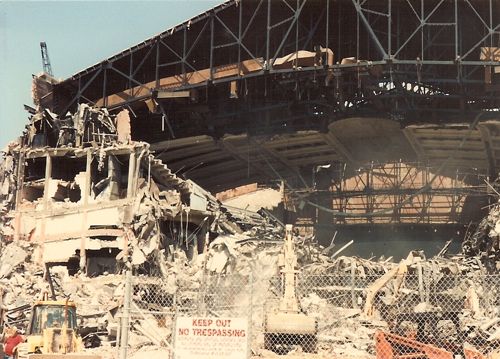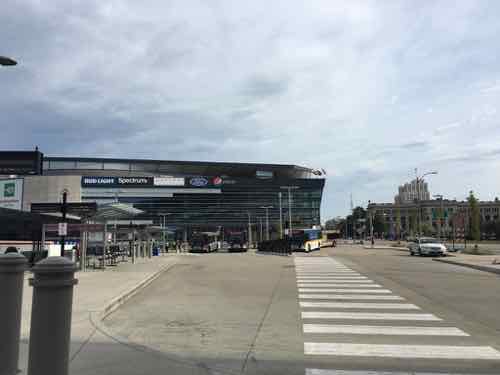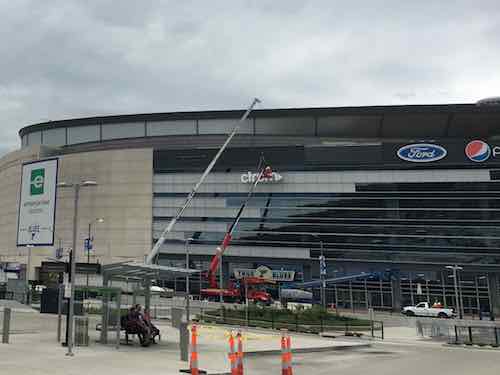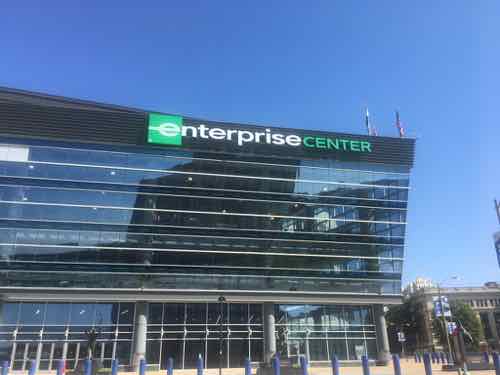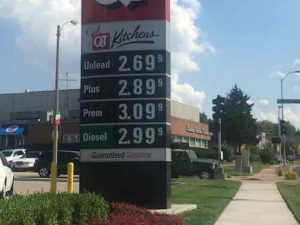Opinion: We Must Demand Less Waste Be Produced
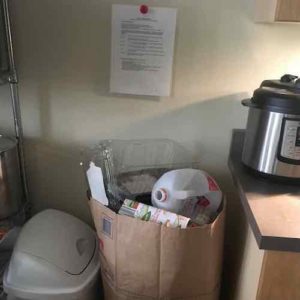
Growing up in the 70s/80s we recycled — aluminum cans. Once the container in the garage filled with flattened cans we were off to the metal recycler to sell them. Though other items were often reused, nothing else was recycled. It all went into trash cans that I often had to drag out to the curb. In the 30 years since I’ve lived on my own I’ve tried to recycle more and more.
Sorting used to be the thing, then single stream. Now a common word is contamination.
Today, the average contamination rate among communities and businesses sits at around 25%. That means that roughly 1 in 4 items placed in a recycling container is actually not recyclable through curbside programs, and this creates enormous problems for the recycling economy.
Problem one: contamination significantly increases the cost to process recyclables. Add this to the fact that commodity prices for recyclables has fallen significantly and the financial sustainability of recycling is at risk. To put another way, not only are plastics lighter, and packaging more complex, recyclables derived from those items are being sold for less and at a higher cost to process. Those are some big economic hurdles.
Problem two: Recycling contamination has a direct impact in the quality of recyclables entering the commodity markets. For example, when foods or liquids are placed in a recycling container they will ultimately saturate tons and tons of otherwise good paper and cardboard that they come into contact with. When paper and cardboard loses its quality, it also loses its ability to be recycled. It becomes trash.
Now, imagine that all taking place at an enormous scale, and not just with food and liquids but with all contaminants. Trash entering the recycling stream impacts the quality of recyclables entering the commodity markets. The higher the recycling contamination, the less we can recycle – that is the challenge we are all facing, and it is a global problem.
In response to these quality issues, China – a major importer of recyclables – recently issued new rules on the types of materials it will accept, including a 0.5% max on recycling contamination. That means that the 25% contamination rate we see today at the curb must reach virtually zero for those items to be recycled. Anything above that 0.5% contamination will be trash. (Waste Management)
China’s decision to no longer purchase & process our contaminated materials means recycling must change. We must adapt to this change. In May the St. Charles County Council rejected a proposed trash transfer center. Besides, landfills are filling up quickly.
One of the first things you can do is attempt to reduce recycling/waste by buying products in minimal packaging. Buying larger sizes of something will reduce the total packaging needed. Buy large refill bottles. Buy spices in refill packages rather than a new plastic/glass bottle.
Those rare times we have a pizza box, my husband has the pleasure of cutting out the greasy cardboard so the non-greasy parts (lid, sides) can be recycled. Sure it’s extra work, but by doing so more than half will be recyclable. We have stainless steel straws for when we go out for shakes, not using straws otherwise.
Still plastics remains a major problem. A costly experimental effort is underway to begin to reduce the size of one of the five floating garbage patches in the world’s oceans.
We need to gather the political will to do better:
Legislators could make laws that incentivize and facilitate recycling, like the national bottle deposit and bag tax bills that were proposed in 2009. These bills would have created a nationwide five-cent deposit on plastic bottles and other containers, and a nonrefundable five-cent charge on plastic bags at checkout. The U.K. launched a similar charge on all single-use grocery bags in 2015 and announced a nationwide bottle deposit requirement in March of this year. Within six months of the plastic bag charge being in place, usage dropped over 80 percent. Similarly, in Germany, where a nationwide bottle bill was put in place in 2003, recycling rates have exceeded 98 percent. In the U.S. these actions would go a long way toward recovering the estimated $8 billion yearly economic opportunity cost of plastic waste. (Scientific American)
Those who profit from plastics, however, don’t want anything to change. You might be thinking “What could replace plastics?” Mushrooms!
From 2010:
Companies are now beginning to use regional agricultural byproducts to reduce the use of plastics in their packaging & products:
Mushroom-based packaging went mainstream when the furniture giant, IKEA, announced that it will replace Styrofoam packaging with EcoCradle for all its products. Ecocradle decomposes within weeks as against Styrofoam packaging that can take centuries to decompose. Moreover, it’s cost-effective to produce and almost as durable as plastic. Ecocradle has also proved to be as insulating and flame-resistant as polystyrene. IKEA’s ingenious initiative is bound to be a motivating factor for other commercial outfits that aim to give back to the society and environment where they exist. IKEA’s Head of Sustainability, Joanna Yarrow, said this was the retailer’s small yet significant step towards reducing waste and conserving ecological balance. Dell, Coca Cola, P&G, and many other brands have switched to eco-friendly alternative packaging. (Medium)
I love the idea of tossing packaging into a compost pile to decompose instead of into the trash/recycling.
Here are the results of the recent non-scientific Sunday Poll:
Q: Agree or disagree: Recycling is too much trouble to bother with.
- Strongly agree: 3 [10.34%]
- Agree: 2 [6.9%]
- Somewhat agree: 1 [3.45%]
- Neither agree or disagree: 0 [0%]
- Somewhat disagree: 3 [10.34%]
- Disagree: 5 [17.24%]
- Strongly disagree: 15 [51.72%]
- Unsure/No Answer: 0 [0%]
As cities in the St. Louis region scramble to maintain recycling we need to do our part by demanding stricter laws on the production of plastics, let manufactures know they need to reduce/eliminate plastics. If we don’t adapt quickly the recycling will begin piling up — before being dumped into dwindling landfills.
— Steve Patterson

